Arnab Ghoshal
Variable Attention Masking for Configurable Transformer Transducer Speech Recognition
Nov 02, 2022



Abstract:This work studies the use of attention masking in transformer transducer based speech recognition for building a single configurable model for different deployment scenarios. We present a comprehensive set of experiments comparing fixed masking, where the same attention mask is applied at every frame, with chunked masking, where the attention mask for each frame is determined by chunk boundaries, in terms of recognition accuracy and latency. We then explore the use of variable masking, where the attention masks are sampled from a target distribution at training time, to build models that can work in different configurations. Finally, we investigate how a single configurable model can be used to perform both first pass streaming recognition and second pass acoustic rescoring. Experiments show that chunked masking achieves a better accuracy vs latency trade-off compared to fixed masking, both with and without FastEmit. We also show that variable masking improves the accuracy by up to 8% relative in the acoustic re-scoring scenario.
Bilingual End-to-End ASR with Byte-Level Subwords
May 01, 2022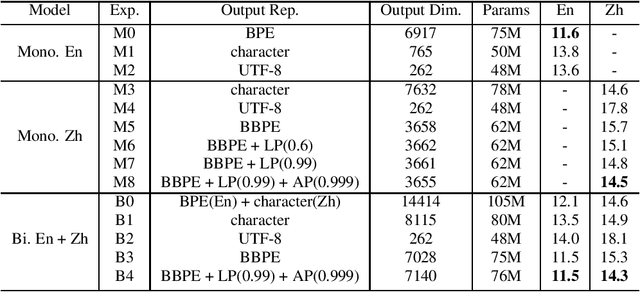



Abstract:In this paper, we investigate how the output representation of an end-to-end neural network affects multilingual automatic speech recognition (ASR). We study different representations including character-level, byte-level, byte pair encoding (BPE), and byte-level byte pair encoding (BBPE) representations, and analyze their strengths and weaknesses. We focus on developing a single end-to-end model to support utterance-based bilingual ASR, where speakers do not alternate between two languages in a single utterance but may change languages across utterances. We conduct our experiments on English and Mandarin dictation tasks, and we find that BBPE with penalty schemes can improve utterance-based bilingual ASR performance by 2% to 5% relative even with smaller number of outputs and fewer parameters. We conclude with analysis that indicates directions for further improving multilingual ASR.
Online Automatic Speech Recognition with Listen, Attend and Spell Model
Aug 12, 2020

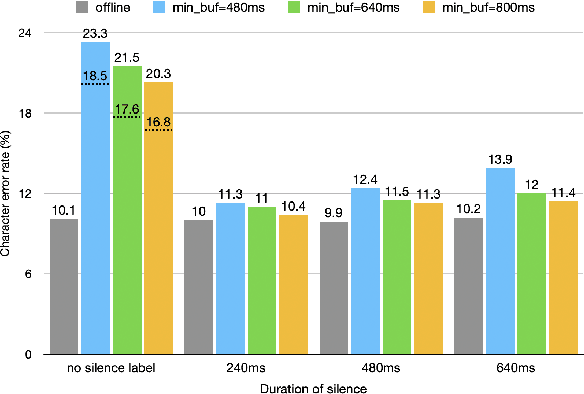
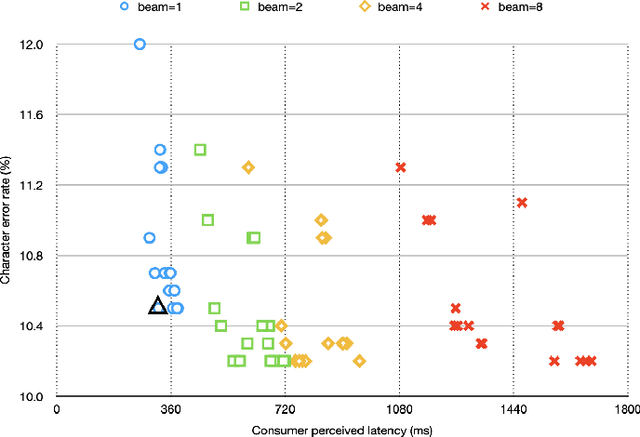
Abstract:The Listen, Attend and Spell (LAS) model and other attention-based automatic speech recognition (ASR) models have known limitations when operated in a fully online mode. In this paper, we analyze the online operation of LAS models to demonstrate that these limitations stem from the handling of silence regions and the reliability of online attention mechanism at the edge of input buffers. We propose a novel and simple technique that can achieve fully online recognition while meeting accuracy and latency targets. For the Mandarin dictation task, our proposed approach can achieve a character error rate in online operation that is within 4% relative to an offline LAS model. The proposed online LAS model operates at 12% lower latency relative to a conventional neural network hidden Markov model hybrid of comparable accuracy. We have validated the proposed method through a production scale deployment, which, to the best of our knowledge, is the first such deployment of a fully online LAS model.
Improving Language Identification for Multilingual Speakers
Jan 29, 2020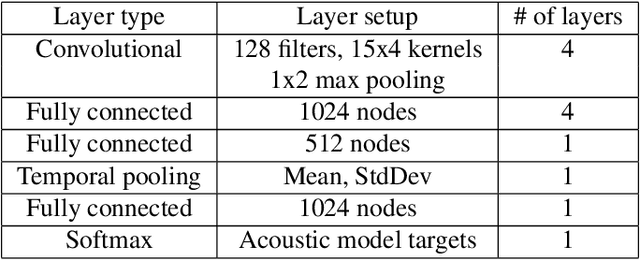
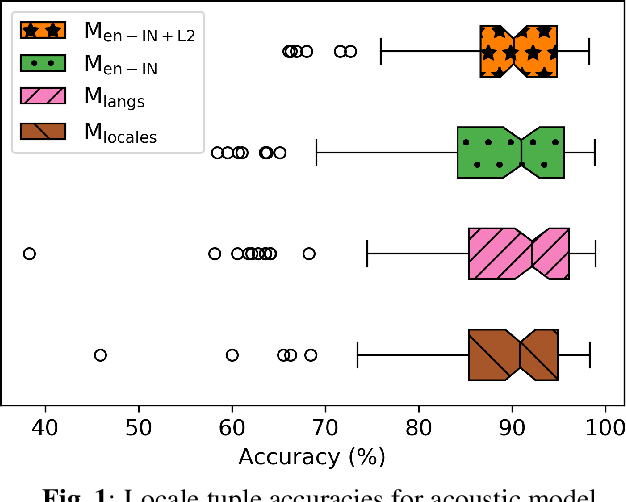
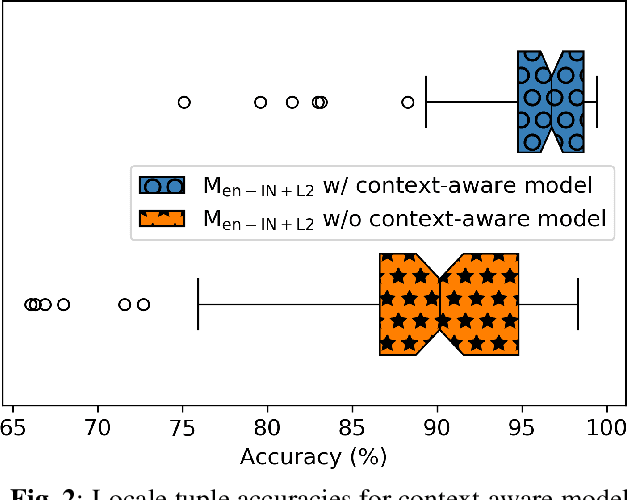

Abstract:Spoken language identification (LID) technologies have improved in recent years from discriminating largely distinct languages to discriminating highly similar languages or even dialects of the same language. One aspect that has been mostly neglected, however, is discrimination of languages for multilingual speakers, despite being a primary target audience of many systems that utilize LID technologies. As we show in this work, LID systems can have a high average accuracy for most combinations of languages while greatly underperforming for others when accented speech is present. We address this by using coarser-grained targets for the acoustic LID model and integrating its outputs with interaction context signals in a context-aware model to tailor the system to each user. This combined system achieves an average 97% accuracy across all language combinations while improving worst-case accuracy by over 60% relative to our baseline.
 Add to Chrome
Add to Chrome Add to Firefox
Add to Firefox Add to Edge
Add to Edge